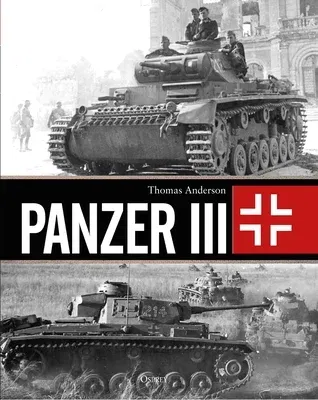This highly illustrated title details the history of the Panzer III
throughout World War II, from its early development in the pre-war years
through its pivotal role in the Blitzkrieg campaigns in Poland and
Western Europe and its eventual obsolescence on the Eastern Front.
The Panzer III was the mainstay of the German armored force in the early
years of World War II, and spearheaded the victories in Poland, Western
Europe, and the Balkans. Designed and developed in the mid-1930s, it was
originally equipped with a 3.7cm gun and with 30mm thick armor. Early
combat in Poland and France saw the need for this to be upgraded, and
later models were armed with a 5cm KwK L/42 gun and had the frontal
armor reinforced to 60mm by adding extra plating. This later version
proved to be particularly effective during the campaigns in the Balkans
and against British armor in the North African desert campaign. However,
in the first months of Operation Barbarossa -- the German invasion of
the Soviet Union -- it became obvious to battlefield commanders that the
Panzer III had become obsolete as a main battle tank and it began to be
replaced by the Panzer IV as the main front-line battle tank. The Panzer
III was relegated to a secondary role, but its chassis proved the basis
for the Sturmgeschutz III, which became the most widespread German
armored vehicle of World War II.

